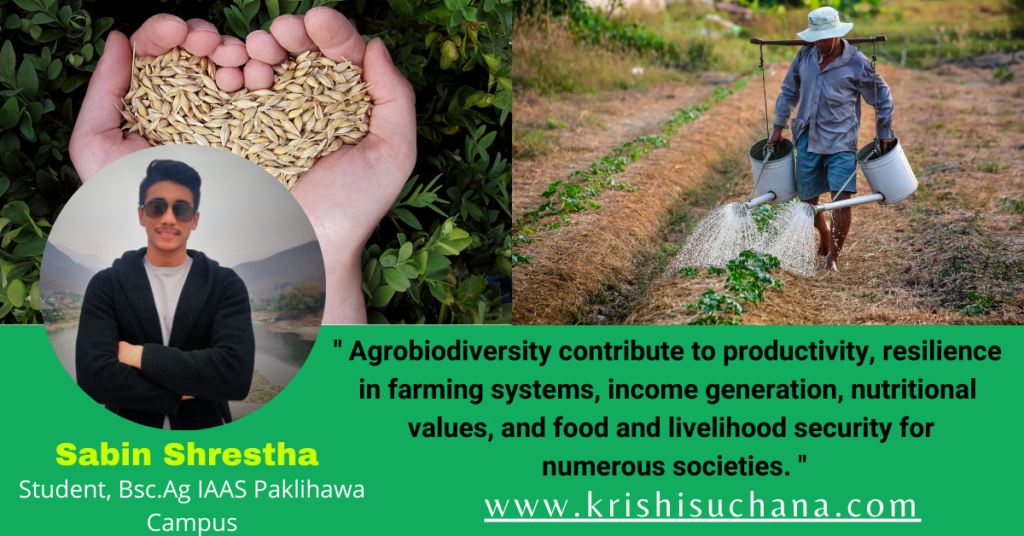Agrobiodiversity for Sustainable Agriculture

Agricultural biodiversity has been realized as fundamental to agricultural production and food security throughout the world. At the genetic, species, and farming systems levels, biodiversity provides valuable ecosystems services and functions for agricultural production as well as a valuable ingredient of environmental conservation. The pattern of agricultural growth have eroded the biodiversity i.e. plant and animal genetic resources, insects and soil organisms. Agrobiodiversity includes not only a wide variety of species and genetic resources, but also the many ways in which farmers can exploit biological diversity to produce and manage crops, land, water, insects and biota. The questions like, how can the erosion of agrobiodiversity be halted and how can it effectively be conserved and enhanced, has been a serious issues for todays’ world since the conflicts between agriculture and biodiversity are inevitable. However, it can be overcome with the sustainable farming principles and practices that conserve and enhance the agrobiodiversity and sustain the food security.
Sustainable practices/ strategies build upon valuable local experiences and knowledge in traditional farming practices, and they also take advantage of recent scientific findings in agro ecology and ecosystem health. There is an urgent need to adopt an agroecosystems approach, beyond a focus on genetic resource conservation alone, to implement other biodiversity enhancing methods in farms, such as integrated ecological pest and soil management. Conflicting agricultural politics that promote monoculture industrial farming models and uniform technology packages need to be eliminated. In addition, the protection of intellectual property rights is vital for those who have knowledge of the values and uses of such biodiversity, particularly for indigenous peoples and small farmers.
Over many centuries, farmers have employed numerous practices to use, enhance and conserve this diversity in traditional farming systems. And such practices continue today: the use of particular species for pest control and the integration of trees and woody shrubs into farming systems are two examples. Wild plant and animal species in surrounding habitats also provide services and value to the farming system. Such practices are a basis of survival and livelihood for millions of people. Traditional farming methods that maximize diversity include the small-scale polyculture systems, called ‘home gardens’, still common today.
Other methods that support high biodiversity are traditional agroforestry systems. Farmers often integrate leguminous trees, fruit trees, trees for fuel wood and fodder tree on their farms. The trees also provide habitat for birds and animals that benefit the farms. Other important dimension of traditional agrobiodiversity is the use of landraces which are conspicuously diverse in their genetic composition. Besides, the practices to support soil fertility and nutrient cycling also make use of agrobiodiversity such as use of compost from crop residue, use of intercrop and cover crops, particularly, legumes, use of mulch and green manures, vermicomposting and elimination of agrochemicals.
The numerous practices used for enhancing biodiversity are tied to the rich cultural diversity and local knowledge that support the livelihood of agricultural communities. These components of agrobiodiversity therefore yield an array of benefits. Agrobiodiversity contribute to productivity, resilience in farming systems, income generation, nutritional values, and food and livelihood security for numerous societies. Agricultural biodiversity also provides ecosystem services on farms, such as pollination, fertility and nutrient enhancement, insect and disease management, and water retention. Moreover, agrobiodiversity has great value for science and technological discovery in crop production through plant breeding.

